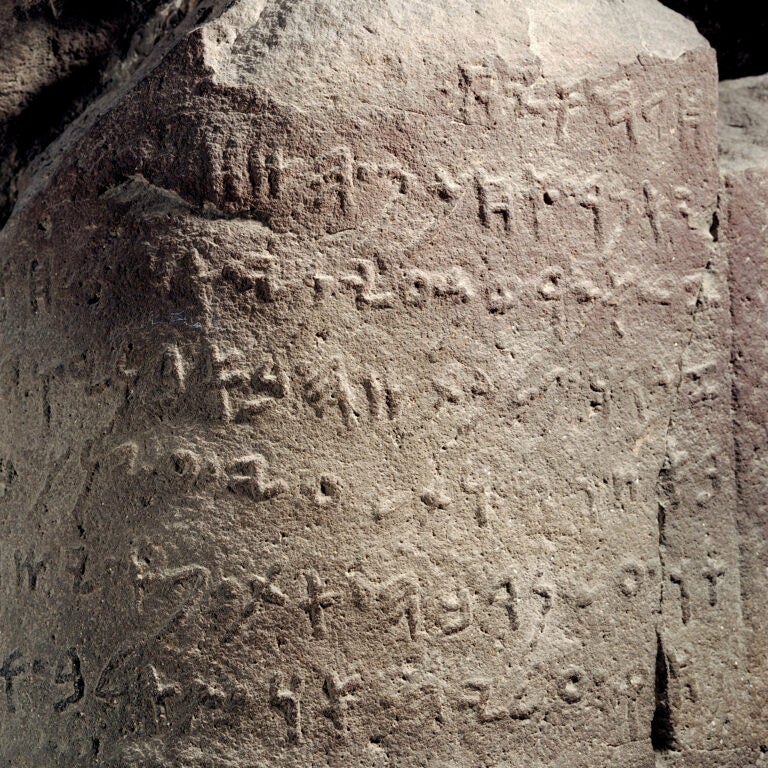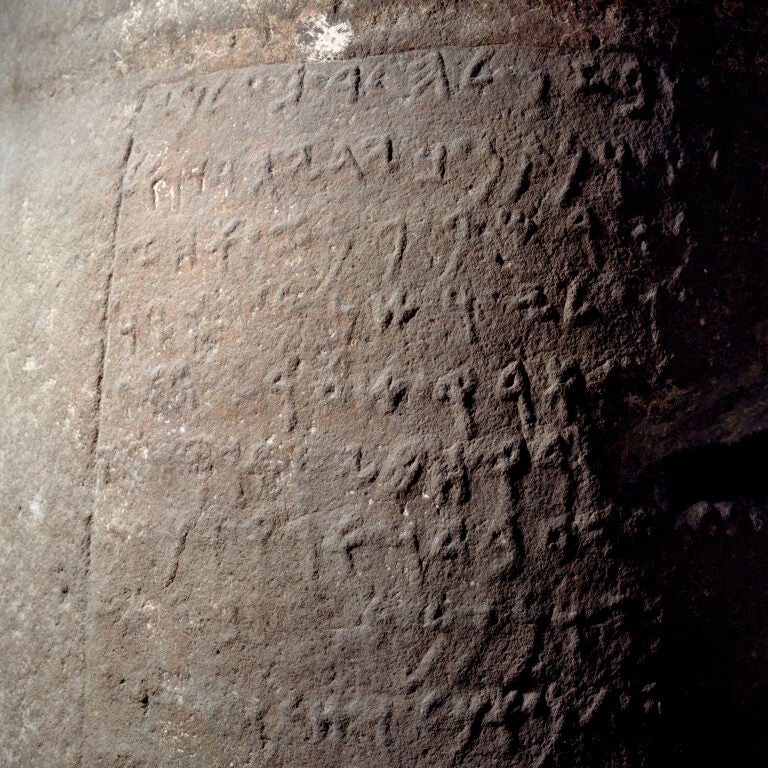Introduction
The inscription of Panamu I, the son of Qarli, did not turn up in the excavations at Zinjirli but had already been discovered in 1890 in a village north east of the site. It is inscribed on the base of a statue of the god Hadad. The sculpture style is of a type that has Hittite precedents. It is a long inscription of some 34 lines, but many of them are badly worn having been exposed to the elements. Unlike the Kilamuwa inscription, Panamu’s Hadad inscription is one of two written in the distinctive Sam’alian dialect. Sam’alian is mainly a mixture of Phoenican and Aramaic but also has some features not found elsewhere.
The inscription suggests Panamu I enjoyed a long and prosperous rule. His reign may have spanned four decades, nearly the first half of the 8th century. He does seem to have been in the lineage of Kilamuwa and Qarli, but legitimizes his rule largely on the basis of special favor the gods. He mentions five gods but the inscription appears on a statue of Hadad. He even claims to have been in a “covenant” with them. His special concern for the gods makes stark contrast with the Bar Rakkib inscription and even that of Kilamuwa. It is, however, reminiscent of Zakkur and of Hittite inscriptions. By divine will Panamu I receives the throne of his father, is made wealthy and showers benefits on the kingdom. The land becomes fertile; his subjects prosper in livestock. He builds and restores temples. Panamu demonstrates a vivid concern for his own afterlife, offering a blessing for whoever will pray that Panamu will eat with Hadad in the hereafter. He also heaps curses on any successor that does not care for his feeding in the afterlife.

Panamu I also claims to put an end to “sword and tongue,” some sort of internal palace strife. He lays out the detailed procedure for communal stoning in cases in which his successor would seek to slaughter members of the royal family who might put forth rival claims to the throne. This preoccupation for bloodless succession and for harmony within the royal family after his death indicate that the upheavals that followed his reign had already begun toward the end of his life. It turns out that his worries were justified as his successor, Bar Sur, was killed in palace plot. After Bar Sur, the dynasty was interrupted by a usurper. Panamu II, the son of Bar Sur, does manage to restore the dynasty using Kilamuwa’s strategy of co-opting the Assyrian king, but this time at great cost to the kingdom of Sam’al.

Article Categories
Non-Biblical Ancient Texts Relating to the Biblical World: Non-biblical inscriptions and documents from ancient times that improve our understanding of the world of the Bible.
Biblical Manuscripts: Images and commentary on ancient and medieval copies of the Bible.
Dead Sea Scrolls: Images and commentary on selected Dead Sea Scrolls manuscripts.
USC Archaeology Research Center: Images of artifacts from the teaching collection of the University of Southern California.